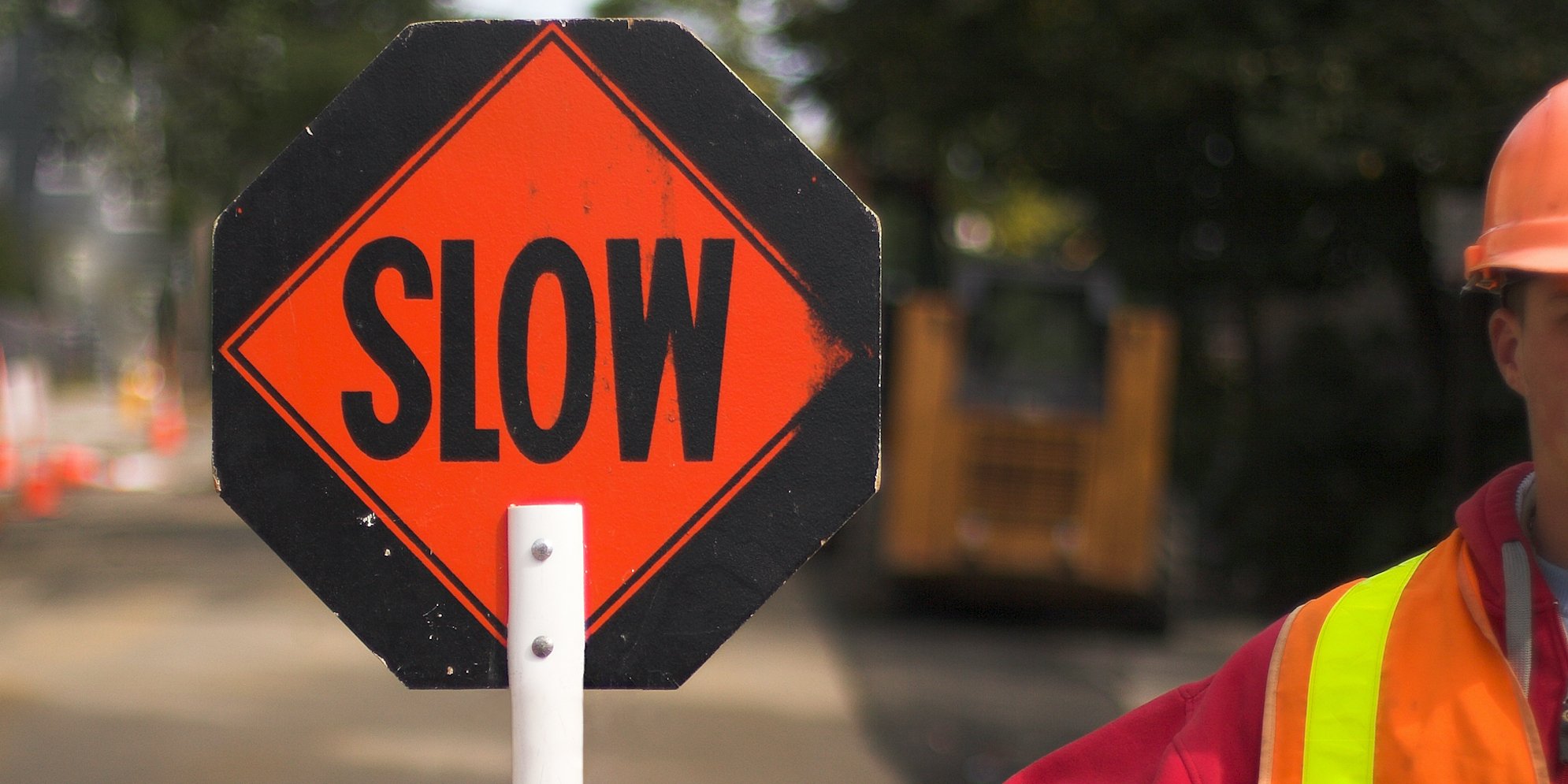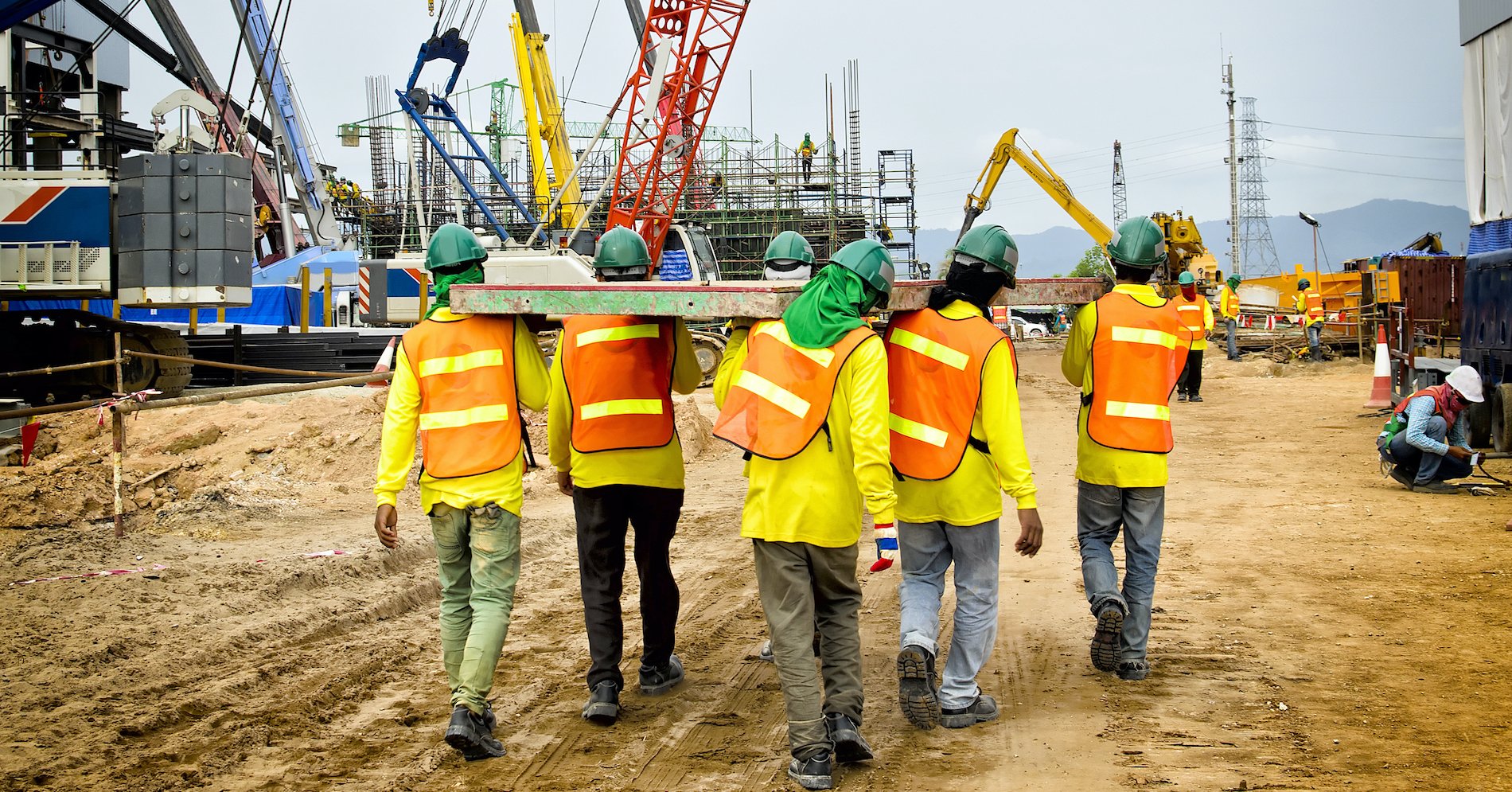Summer can be an ideal time to work in construction, but overly hot or humid weather poses a major threat to construction workers. According to the Occupational Health and Safety Administration (OSHA), working in heat causes thousands of illnesses and dozens of fatalities every year. About three out of four of these fatalities happen during the first week of work.
Summer 2020 was one of the hottest on record, according to the National Oceanic and Atmospheric Administration, and temperatures are expected to be hotter than normal once again this summer. This blog shares important information about heat illness safety so construction safety managers can keep their crews safe when working in heat.
Look: 7 Ways to be More Proactive About Worker Safety
Types of heat illness
There are four types of heat illness, according to the Cleveland Clinic:
- Heatstroke is the most serious form of heat illness and requires emergency treatment, according to the Mayo Clinic. Heatstroke occurs when a person’s body temperature rises to 104 degrees Fahrenheit or greater due to prolonged exposure to hot, humid weather or intense physical activity in hot weather. Heatstroke can severely damage the brain, heart, kidneys, and muscles, and it can be fatal.
- Heat exhaustion occurs when a person’s body can’t produce enough sweat to cool down, and it begins to overheat. According to the Cleveland Clinic, heat exhaustion can lead to heatstroke if left untreated.
- Heat cramps are painful, involuntary muscle spasms usually in the calves, arms, abdomen, or back. Heat cramps are caused by fluid loss by way of excessive sweating, according to the Mayo Clinic, and they can be a symptom of heat exhaustion.
- Heat rash is a red, bumpy skin irritation caused by blocked sweat glands. According to the Cleveland Clinic, heat rash is usually found on the neck, armpits, chest, back, elbow creases, and groin area. Though it is most common in children and babies, anyone can develop heat rash.
According to the Centers for Disease Control and Prevention (CDC), construction workers are also susceptible to the heat illness rhabdomyolysis. Rhabdomyolysis is a rare condition caused by muscle breakdown and muscle death, according to the Cleveland Clinic. People have an increased chance of developing rhabdomyolysis if they undergo intense physical exertion in hot temperatures.
Heat illness symptoms
Although there are different types of heat illness, many heat illness symptoms overlap:
- Profuse sweating or hot, dry skin
- Thirst
- Elevated body temperature
- Confusion
- Headache
- Nausea
- Dizziness or fainting
- Weakness
- Muscle cramps, pain, or spasms
- Irritability
Heatstroke symptoms also include seizures and loss of consciousness. Heatstroke can be fatal if left untreated or if treatment is delayed.
Read: 4 Common Predictive Leading Indicators
Heat illness prevention
Per OSHA, all employers should create a written plan to prevent heat illness. Elements of a construction worker safety plan should include:
- Who will monitor workers for heat illness symptoms on a daily basis
- How new workers, temporary workers, and workers returning from extended leave will gradually develop heat tolerance
- The engineering controls and work practices that will be used to prevent heat illness
- The training that will be provided to supervisors and workers
- How the employer will adapt in response to heat advisories or heat warnings from the National Weather Service
OSHA heat illness prevention tips for workers include:
- Drinking at least one cup of cool water every 20 minutes. Workers should avoid caffeinated beverages like coffee and soda, as they can contribute to dehydration.
- Taking frequent breaks in a cool, shaded area to recover from heat and humidity.
- Wearing loose-fitting, light-colored, breathable clothing; a wide-brim hat that protects the neck, ears, eyes, forehead, nose, and scalp; UV-absorbent sunglasses; and sunscreen with a sun protection factor (SPF) of at least 30.
- Working in the shade or otherwise limiting their exposure to the sun between the hours of 10 a.m. and 4 p.m., if possible.
- Monitoring themselves and their coworkers for signs of heat illness.
Heat illness response
Heat illness can be deadly, so it’s vital that construction safety managers act fast if they suspect a member of their crew is displaying heat illness symptoms.
A heat illness OSHA poster emphasizes that managers should call 911 immediately if anyone is having abnormal thinking or behavior, slurred speech, seizures, or loss of consciousness. While waiting for emergency help to arrive, they should work to cool the person with water or ice.
If a worker experiences headache, nausea, weakness, dizziness, heavy sweating (or hot, dry skin), elevated body temperature, extreme thirst, or decreased urine output, construction managers should:
- Move the worker to a cooler area
- Give water to drink
- Remove unnecessary clothing
- Cool with water, ice, or a fan
Never leave a worker displaying heat illness symptoms alone, and always call for professional emergency medical care if ever in doubt about their wellbeing.
Don’t let sunny skies fool you: Serious worker injuries and death can happen on beautiful summer days. Working in heat exposes workers to hazards they don’t usually experience in cooler months, but construction safety managers can mitigate safety threats with these heat illness prevention tips.
For more worker safety help, check out “How Construction Leaders Can Combat Risk Normalization.”

